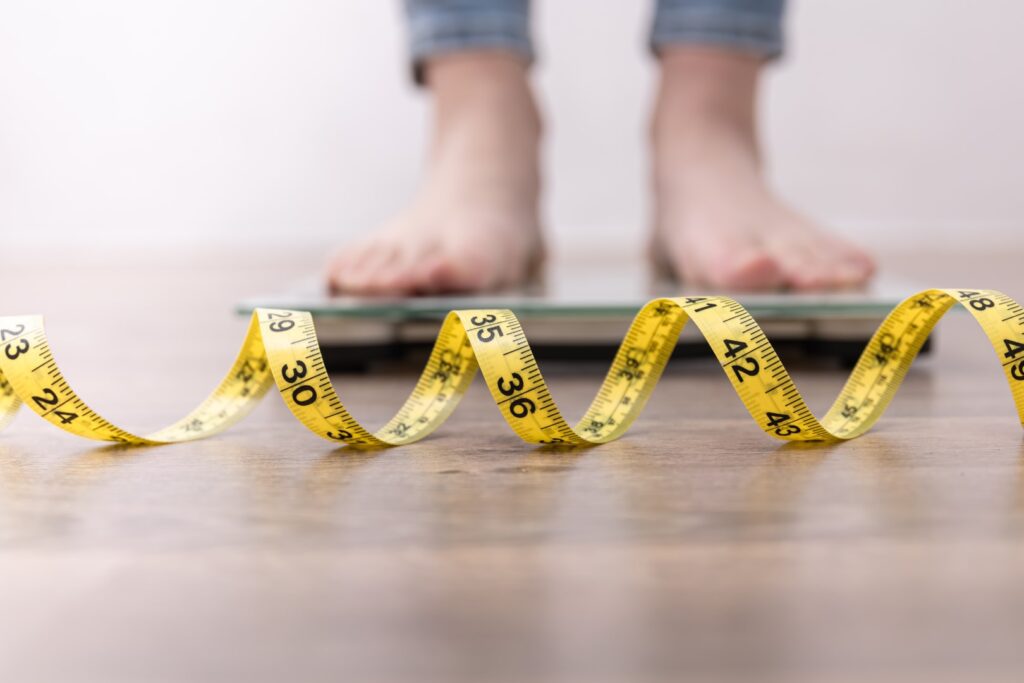Lose Weight with Semaglutide
Semaglutide is a medication that serves a dual purpose: it is FDA-approved for both weight loss and the treatment of type 2 diabetes. Let’s delve into the details:
Weight Loss:
- Semaglutide has been successfully used for several years under three main brand names: Ozempic, Wegovy, and Rybelsus.
- It mimics a hormone called glucagon-like peptide 1 (GLP-1), which the gut naturally produces in response to food.
- How it works for weight loss:
- Slows down gastric emptying, making you feel full faster and stay full longer.
- Suppresses the hunger hormone “ghrelin”, reducing cravings for high-calorie foods.
- Affects blood sugar levels by stimulating insulin production and inhibiting the release of the glucagon hormone.
- These processes lead the body to burn fat faster for energy.
- When used alongside a healthy diet and exercise routine, semaglutide enables sustainable long-term weight loss without hunger or deprivation.
Type 2 Diabetes Treatment:
- Semaglutide helps control blood sugar levels in type 2 diabetic patients.
- It increases insulin release and reduces the amount of glucagon released.
- Semaglutide is administered either as a subcutaneous injection (Ozempic and Wegovy) once a week or as a tablet (Rybelsus) once a day, 30 minutes before eating or drinking.
- It is not suitable for people with type 1 diabetes.
- Each brand of semaglutide is FDA-approved for different conditions.

What is Semaglutide?
Semaglutide is an FDA-approved weight-loss treatment for adults. Conventionally used to treat type 2 diabetes, it was observed to also be effective for weight loss and has since been tested and approved as a weight-loss medication. Successfully used for several years under two main brand names, it is now available in its generic form at a significantly lower price.
It mimics a hormone called glucagon-like peptide 1 (GLP-1), which the gut naturally produces in response to food, and which causes both a reduced appetite and regulates blood sugar levels.
How does Semaglutide work?
Semaglutide works for weight loss due to three main processes. First, it slows down gastric emptying, so when you eat you feel full faster, and stay full longer. It also shuts down the hunger hormone “ghrelin”, which drives our cravings for high-calorie foods. Both of these factors mean patients instinctively reduce their calorie intake. Finally, it also affects blood sugar levels by stimulating insulin production and inhibiting the release of the glucagon hormone, which leads the body to burn fat faster in order to turn it to energy.
This all combines to help people effectively lose a significant amount of weight, without ever feeling hungry or deprived of food. When used alongside a healthy diet and exercise routine, this program creates long-term shifts that enable sustainable long-term weight loss.
Am I a candidate for Semaglutide?
Semaglutide can only be prescribed by a licensed provider, who will evaluate your medical status and history during a consultation and determine if this is the right weight-loss program for you and your unique needs.
Semaglutide is ideally suited for adults who are obese or overweight, either with a body mass index (BMI) over 30, or a BMI of 25–30 and at least one other complication that is related to body weight, such as insulin resistance, glucose intolerance, type 2 diabetes, high blood pressure, high cholesterol, hypertension, sleep apnea, arthritis, or cardiovascular disease.
How frequently, and for how long will I need to take it?
The injections are administered once per week, on the same day each week. It is a small injection that goes under the skin and into the fatty tissue of either the abdomen or thigh.
Many patients take semaglutide for 3–6 months, but every patient is unique and your practitioner will plan and adapt your treatment based on your individual health, needs, and results.
What are the most common side effects?
Many people enjoy semaglutide’s benefi ts without any side eff ects at all. However, others can experience a few symptoms when starting treatment, although these usually subside after four to six weeks, if not before. This is another reason that the dosage usually starts low, so your body can become accustomed to it.
The most common side effects include nausea, constipation, and fatigue, although these symptoms are usually mild, and easily managed if you follow your practitioner’s recommendations.

Semaglutide Diet Plan
Semaglutide is a medication approved by the FDA for chronic weight management in adults with obesity or who are overweight and have weight-related medical problems. Ensuring your diet complements this treatment is essential, so any modifications should be discussed with your healthcare provider to avoid any potential interactions or adverse effects.
When taking semaglutide for weight loss, it is important to modify your diet and lifestyle to get the most out of semaglutide and stay healthy. While taking semaglutide, side effects like bloating, stomach pain, and nausea are possible. Therefore, choosing nutrient-rich foods is key to preventing side effects of semaglutide.
What to eat…
It is important to be mindful of your appetite and refrain from overeating when you feel full. By focusing on a whole-food, minimally processed diet and incorporating the foods below, you are more likely to maximize your results with semaglutide.
Lean Proteins
Opt for lean protein sources like fish, skinless poultry, legumes, and tofu. Fatty fish such as salmon, mackerel, and sardines. Protein should make up 10-35% of your total daily caloric intake
Fruits and Vegetables
Aim for a variety of colorful fruits and vegetables as they are rich in fiber, vitamins and minerals
Whole Grains
Choose whole grains like brown rice, quinoa, whole-wheat bread, and oats. These are rich in fiber and are absorbed into the bloodstream slower than refined carbohydrates, keeping you fuller for longer and preventing sudden spikes in insulin levels
Healthy Fats
Include small sources of healthy fats such as avocados, nuts, seeds, and olive oil
Stay Hydrated
Drink plenty of water to keep your body hydrated
What not to eat…
No foods are completely prohibited when taking semaglutide. However, some foods should be reduced or avoided altogether if possible. This is because certain foods can increase semaglutide side effects such as bloating, nausea, and abdominal cramping. Additionally, fatty, or saturated foods can contribute to weight gain. Limiting the following foods below reduces the chances of increasing side effects that you experience with semaglutide.
Highly Processed Foods
Minimize the intake of refined carbohydrates including white bread, cereals, white pasta and baked goods
Sugary Foods
Avoid desserts, sweets, candy and any beverages with added sugar. Sugar causes rapid spikes in insulin levels, making it more difficult to lose weight
Fried Foods
Including fast food. These foods are typically high in calories and unhealthy fats
Calorie Containing Beverages
Avoid juice, sweetened tea, coffee, soda, and any other beverage that contains calories. These types of drinks lack nutritional value and add unwanted calories to your diet
Alcohol
It is important to limit alcohol intake due to its high caloric content and lack of nutritional value. Additionally it can cause sleep disturbances which can make weight loss more difficult
Connect with us by phone or send us a message to schedule an appointment, get answers to your questions, or just to say hello.
